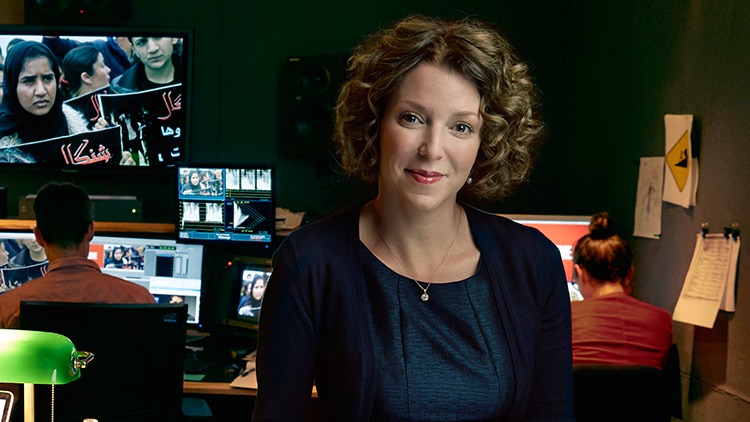The Five Spot: Raney Aronson-Rath

Though Raney Aronson-Rath always thought she was meant to be a writer, she got her first push into documentary filmmaking as a graduate student at Columbia University. She landed a job as a translator for a documentary series about China and India and soon started learning about the filmmaking process. “I was actually not paying attention to translating, and the executive producer of the series [Smithsonian Channel’s David Royle] said, ‘You know you’re not a really great translator, but you’re a great production assistant. Do you want to join us as a PA?’ I said, ‘Absolutely,’ and I never looked back.” Aronson-Rath since has directed several films for PBS’ Frontline, joined as senior producer and in 2015 became executive producer, taking over for mentor and series founder David Fanning. Frontline will examine politics and President-elect Donald Trump in the upcoming docs Divided States of America (Jan. 17-18) and Trump’s Road to the White House (Jan. 24). An edited version of Aronson-Rath’s conversation with B&C contributing editor Luke McCord follows.
What was the transition like taking over for David Fanning as EP? I like to say the transition was many years in the making, it felt very organic. I was given this amazing gift of time. David’s message to me was to build your team, build the people around you and hire the people you believe will really be able to help you run the series going forward. I was able to have a number of years to plan and be strategic about different things that helped me build new audiences and a new digital strategy that has served us really well.
What’s been the key to Frontline’s digital strategy? It starts with the fact that the Frontline team was actually streaming digital films starting in 2000. So as a lot of news organizations had to transition to digital…we were already there. The biggest shift for us in the last couple of years is we’ve started to publish actively and aggressively on different platforms in the native form that it should be published. So the digital video that we’re doing on YouTube, on Facebook, and the work we do on our website now is all in the right form and where it should be.
What does virtual reality add to Frontline documentaries? The best stories in virtual reality are where you simply can’t go there yourself. You’re immersed in the story in a way you just wouldn’t be as an ordinary person. So it’s very tense and immersive situations that work best for virtual reality and places you simply want to be and explore.
How has the 24-hour news environment and social media affected Frontline? Our journalism hasn’t changed at all in the sense that we are deeply committed to long-form journalism and that it takes time to get things right. We are very committed to vetted, factual journalism, and that means we don’t rush. When we publish, we’re confident. If we’re not confident, we hold back in our journalism. It’s a little counterintuitive to the 24-hour news cycle, but our sweet spot is the work that we do that’s seminal, long-form and thoughtful. That’s what people look to us for.
How will this month’s Frontline documentaries present President-elect Trump in a unique way?Frontline has always been really committed to nonpartisan, fair television and tough investigative journalism. So the way that we’re presenting the films this month would be like any candidacy and any presidency. This month’s offering will just be like the journalism we’ve always done throughout the many years of political journalism. The team who is doing the work has done a multitude of political films through the last number of decades. This is our most established and decorated political team at the forefront of this work. It’s breakthrough. It’s revealing. And it’s also incredibly fair.
Broadcasting & Cable Newsletter
The smarter way to stay on top of broadcasting and cable industry. Sign up below
